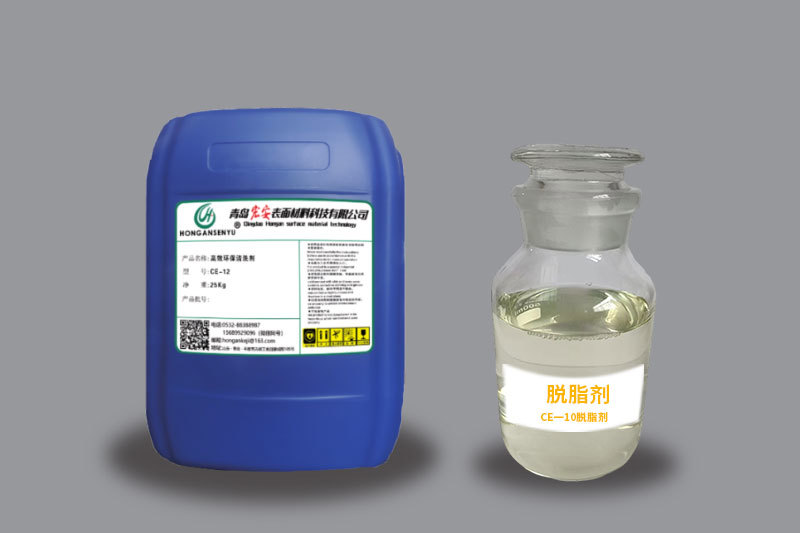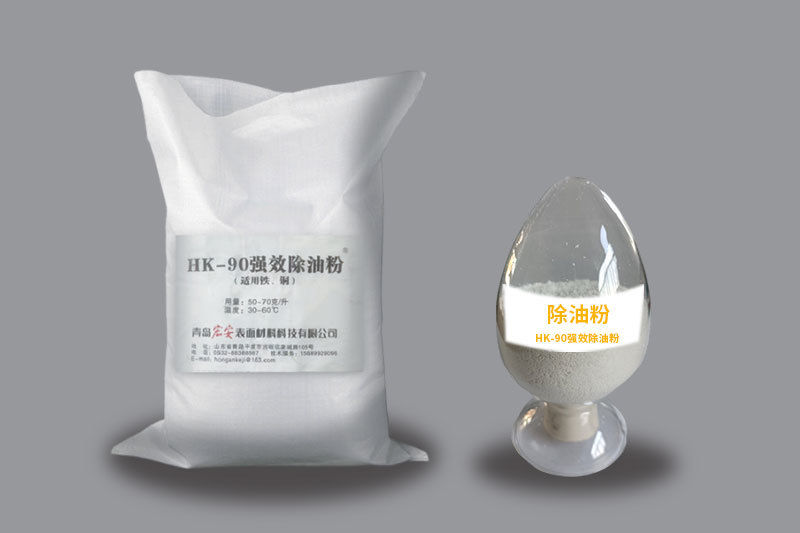Product Details
Product classification
Contact Us
Contact:
E-mail:
Company Address:
105 Kangcheng Road, Guxian Industrial Park, pingdu city City, Qingdao, Shandong Province


HK-82 New Generation Cyanide-free Alkaline Bright Zinc Process
Has its own laboratory and development team, the laboratory and professional qualified scientific research units in close cooperation, research and development of the production of 0 CE-10 acid degreasing agent, HK acid zinc additive, KHK cyanide-free alkali zinc additive and other high-tech products with international excellent quality.
- Commodity name: HK-82 New Generation Cyanide-free Alkaline Bright Zinc Process
- product details
-
Qingdao Hongan Surface Material Technology Co., Ltd. is committed to manufacturing professional products, continuous innovation and manufacturing, to provide customers with professional services.
Product Features
--------1. Excellent metal distribution.
2. The zinc layer has excellent brightness and is easy to passivate.
3. Good ductility, no bubbles,
4. Especially suitable for hanging plating, also suitable for barrel plating or continuous application.
Method of use
--------slotting value HK-82 softener 8~12mL/L HK-82 main light agent 0.5~1.5mL/L HK-82 water quality regulator 2~10mL/L HK-82 remover 1~2mL/L Daily consumption Softener 2 main light agent 1 Analytical value Zinc: 6~9(g/L) Sodium hydroxide: 110~130g/L Sodium carbonate: 80(g/L ) Temperature: 20~40 ℃ (Maximum current density depends on zinc content and stirring) deposition rate 0.2um/min
0.35um/min(1A/d㎡)
(2A/dm²)barrel plating
Hanging platingTrough: Plastic or steel with plastic lining Stirring: The cathode moves at 3~5 meters/minute Filtration: continuous filtration Cooling: Cooling required for high current loads, depending on electrolyte volume Exhaust: It is strongly required to use, especially when using the emotional anode Anode: when using soluble anode
--------
Soluble zinc anode, sheet, rod and ball device in titanium blue, or zinc anode plate placed on titanium hook (zinc anode plate lead content should usually be 0.002 |), when the current density reaches 3A/dm?, the anode current efficiency is about 100. More than 3A/dm2 anode plate will be covered with a layer of semi-conductive zinc oxide coating, the anode black, the voltage suddenly increased by 3~4V, the anode current efficiency with oxygen evolution 95 ~ 98% and reduced to 2 ~ 5%. However, this method is not infeasible, but it is difficult to control the zinc content in the electrolyte by adjusting the anode area. The anode must be continuously moved in and out, so the current in the plating tank cannot be evenly distributed.maintenance and analysis
--------Zinc (Zn) titrimetric analysis Sodium hydroxide (NaOH)
titrimetric analysisAnalysis of sodium hydroxide (NaOH) by barium chloride titration Reagent: 0.1mol/LEDTA (disodium ethylenediaminetetraacetic acid)
buffer solution
(100g/L NaOH and 240mL/L 98% acetic acid dissolved in pure water)
Indicator: Xylenol Orange
(1g xylenol orange 99g potassium nitrate)0.5mol/L sulfuric acid (= 1N)
Indicator:
0.1% solution of diphenylamine orange0.1mol/L hydrochloric acid standard solution
15% barium chloride dihydrate solution 15% BaC12 · 2 H2o; neutral
Indicator: 1% phenolphthalein indicator 1% phenolphthalein dissolved in ethanol)Steps: 1. Take 5mL into the cone of 250mL
In the bottle
2. Add about 100mL of deionized water
3. Add 20m [buffer solution
4. Add 1 teaspoon head indicator
5. Use 0.1mol/L EDTA drops
solution
6. Red turns to yellow1. Move 5mL into 250ml cone
in a shaped bottle
2. Add about 100mL of deionized water
3. Add 5 drops of indicator
4. Titration with 0.5 o1/L sulfuric acid
The solution turns from orange-brown to yellow1. Transfer 0.5 ml of sample solution to 250 ml of conical flask
2. Dilute to about 100 ml with deionized water
3. Add 50 ml of barium chloride solution for 10 minutes
4. Add a few drops of indicator
5. Titrate with 0.1mol/l hydrochloric acid until it is stable and colorlessConversion: consumed mLx1.3078 = g/L zinc Consumption of mLx7.98 = g/L sodium hydroxide Consumption of mLx7.89 = g/L sodium hydroxide Tip: barium chloride solution must be neutral; If necessary, 0.1mol/L sodium hydroxide or hydrochloric acid solution can be used to adjust according to the color development point of phenolphthalein. Do not drop too much acid each time, and stir evenly. Sodium carbonate (Na2CO3)-titrimetric analysis
--------Reagent:
5% Barium Nitrate Solution
1mol/l hydrochloric acid
1mol/L sodium hydroxide solution
Indicator: 0.04% methyl orange solutionSteps:
1, remove 10m [into 250mI conical flask
2. Add about 50mmL deionized water
3. Boiling solution
4. Add 75mI barium nitrate solution (precipitation)
5. Cool the solution and let the precipitate settle for 30 minutes
6. Filter the solution with medium-speed precision filter paper (pour the supernatant first, then the precipitate and then rinse the flask with a small amount of water)
7. Clean the filter paper and precipitate: rinse with deionized water at least 5 times. Each cleaning must be completely filtered but the precipitate must not become thousands; the precipitate must not contain hydroxide after cleaning (test: add a drop of nitric acid and a drop of silver nitrate to a few drops of filtrate, if there is no white precipitate, it means it has been cleaned thoroughly)
8. Transfer the fully cleaned filter paper and sediment to 250m [conical flask
9. Add 100mL deionized water
10. Accurately add 20mL1mol/hydrochloric acid
11. Boil the solution for a while
12. After the solution is cooled, add 3 drops of indicator
13. Titrate with 1 mol1 sodium hydroxide until the solution changes from red to orange yellowConversion:
(20-milliliters consumed) x5.3
g/L sodium carbonateSodium carbonate (Na2CO3)-titrimetric analysis
--------Before referring to the following list, ensure that the temperature, current density and analysis value are within the normal range. Hull test shall be carried out with 250mL Hull tank 1A for 15 minutes. The steel test piece shall be fully pretreated. The electroplated Hull cell test piece should be soaked in 1% vol nitric acid for 15 seconds, cleaned with tap water, and then dried with hot air.
Key words:
QIngdao Hongan surface materlal technolo

whatsapp:+8615689929096

E-mail:sales@qdhongan.com

Address: 105 Kangcheng Road, Guxian Industrial Park, pingdu city, Qingdao, Shandong Province
Customer Message
Copyright©2024 QIngdao Hongan surface materlal technolo LTD SEO Business License







